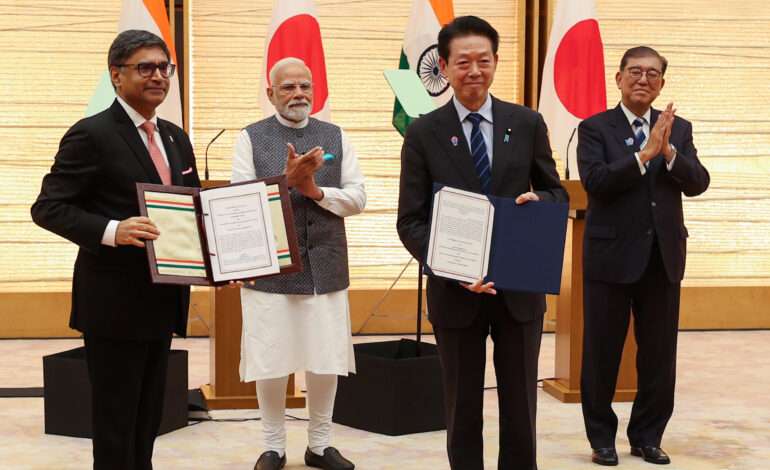
Japan PM’s exit sparks debate on Asia’s defense against US tariffs
Prime Minister Narendra Modi’s late August visit to Japan came at a pivotal moment, with Tokyo balancing its strategic ties with India against growing friction with the United States over tariffs.
During talks with then–Prime Minister Shigeru Ishiba, India and Japan adopted a 10-year roadmap to expand their Special Strategic and Global Partnership. Japan pledged to double investments in India to JPY 10 trillion (USD 67 billion), while both sides agreed to cooperate in high-speed rail, metro projects, financial services, agri-business, and ICT sectors.
However, Japan’s trade tensions with Washington overshadowed these developments. The US imposed a baseline 15 percent tariff on most Japanese imports on September 4, while reducing auto tariffs from 25 to 15 percent as part of a deal tied to Tokyo’s USD 550 billion investment commitments. Japan’s chief negotiator even canceled a planned US visit to manage unresolved issues at home.
Ishiba’s abrupt resignation after concluding negotiations with the US has injected uncertainty into Japan’s economic strategy. Analysts suggest Tokyo’s departure from stable leadership could complicate discussions about a broader trade coalition.
Speculation had grown that Japan might align with Russia, India, and China (RIC) to counterbalance US protectionism. Together, such a grouping—RICJ—would account for nearly one-third of global GDP and 40 percent of the world’s population. Economically, the bloc could reshape trade flows, investment patterns, and technology standards across Eurasia.
With Ishiba stepping down, Japan’s role in any such coalition remains uncertain. Regional economies, including South Korea and ASEAN nations, are now weighing alternative trade frameworks amid rising US tariffs, while China is expected to strengthen outreach through the Regional Comprehensive Economic Partnership (RCEP).